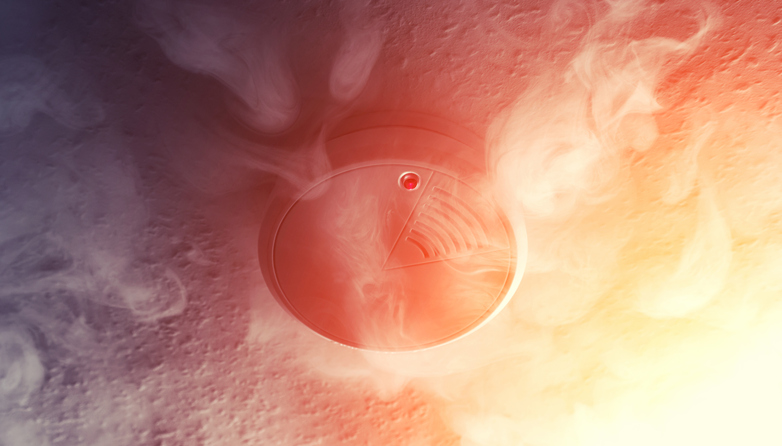Working smoke alarms and CO Detectors regularly save lives!!!! Even so, many home fire deaths are often due to inadequate warning from alarms that did not sound. Alarms may have been disconnected; batteries may have been dead or removed. It is vital to understand that smoke alone, may not wake you up at night, and that it may dangerously put you into a deeper sleep. Victims often don’t wake up in time, or at all, and die as a result of this. A working smoke alarm is the only thing that can save your life in this respect.
Smoke alarm basics
- Smoke alarms are required by law on every level of your home. We suggest one near the kitchen and outside of all sleeping areas.
- Alarms should be tested monthly by pushing the test button along with changing the batteries annually. We suggest at the time change; either spring or fall.
- Replace the batteries with non-rechargeable batteries, as rechargeable batteries lose their charge without emitting any warning signal.
- Replace the entire smoke alarm at least every 10 years. This includes hard wired and interconnected units as well.
- It is good to always (in case of fire):
- Know two ways out of every room
- Have a prearranged meeting place
- Have a fire escape plan, and practice it
- Once you are out, stay out and call the fire department
- Only return once the fire department says it is safe to do so.
Carbon monoxide basics
Carbon monoxide (CO) alarms help detect CO gas in your home. They are needed because this gas can lead to death and has no smell, taste, or colour. This gas can be present whenever you burn a fossil fuel like oil, coal, wood, gasoline, propane, or natural gas. There is always a risk in the home year-round; but especially in the winter months as homes are heated by furnaces, wood stoves, water heater or boilers etc. Carbon monoxide can only be detected with a carbon monoxide detector.
Like smoke alarms, they are required by law in every residence with a fossil fuel burning appliance or an attached garage.
- Install only alarms certified by a body that is accredited by the Standards Council of Canada. Look for a mark such as CSA, UL, or Intertek ETL.
- The most important areas to install alarms, is in hallways and outside sleeping areas. There should be a minimum of one on every level of your home.
- Replace batteries and inspect the alarm as recommended by the manufacturer. CO alarms need to be replaced every 7 years, or sooner if it malfunctions.
- Symptoms of carbon monoxide poisoning include flu like symptoms at low levels, and high levels (due to exposure or length of time) can progress to convulsions, coma and death.
- If you hear the alarm:
- Don’t try and find the source of the CO
- Leave your home immediately and go into the fresh air
- Once outside call 9-1-1 for your fire department or emergency services
- Return to your home after the problem has been fixed.
- Read the manufacturer’s instructions and understand what the audible alarms mean.
